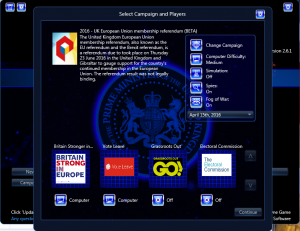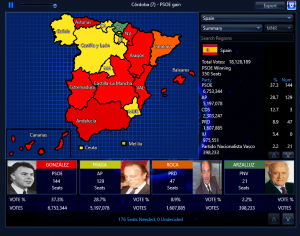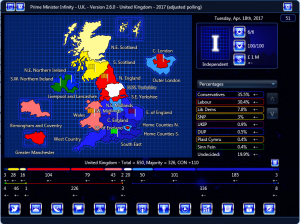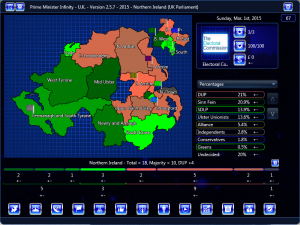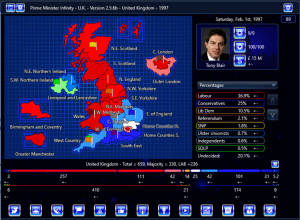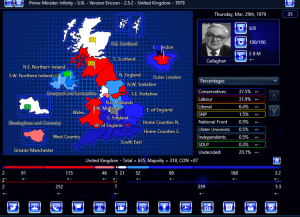This pack includes five different What If? Scenarios from recent UK political history:
1.1978-The Election that never was
The last four years have been difficult for the Labour government. Following Harold Willson’s resignation, James Callaghan has succeeded to the Premiership, and has shortly had to face an economic crisis, culminating in taking a bailout from the IMF. However, the UK looks to have turned the corner, and with the polls too close to call, Callaghan has taken a gamble and called an early election in hopes of seeing off the challenge from Margaret Thatcher’s Tory party. Will it pay off?
2. 1984- Falklands Lost
Following Margaret Thatcher’s win in 1979, British politics has undergone its biggest upheaval in half of a century. Faced first by economic hardship, then by the loss of the Falkland Islands to Argentina, the Iron Lady was forced to resign in 1982, and was replaced by the unity figure of William Whitelaw. Meanwhile, the newly formed SDP-Liberal Alliance has surged to a lead in the polls, and a radically left wing Labour, though divided and polling below both, looks well placed to form a government. Who will triumph in the first truly three party race for a generation?
3. 1992-Thatcher Fights On
Margaret Thatcher has survived Michael Heseltine’s 1990 leadership challenge, but has been badly damaged in the eyes of the voters. Will she be able to turn things around to pull off a record breaking fourth term? Or will Neil Kinnock’s Labour finally oust her after thirteen years?
United Kingdom – 1992 Thatcher Fights On
4. 1997-Smith Lives
John Smith never suffers the heart attack that kills him, and leads Labour into the 1997 General Election. The polls are projecting a comfortable Labour victory, but will John Major be able to turn Tory hopes and keep Labour out of power yet again?
United Kingdom – 1997-Smith Lives
5. 2015-The Right Brother?
Having narrowly defeated his younger brother in the 2010 leadership contest, David Miliband is now leading Labour into the 2015 general election. Though Labour has estabilished a slight lead in the polls, a hung parliament is still widely projected, amidst the rise of smaller, populist parties like UKIP, the Greens, and the SNP. Will Milliband be able to prevail over David Cameron?
Let me know if there any issues that need sorting out with any of the scenarios.


